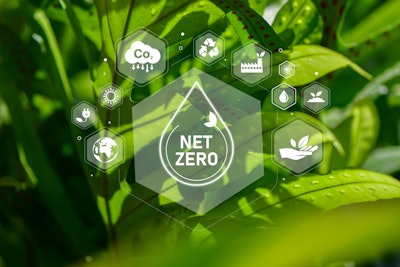
Price hikes and fear of an economic downturn may be weighing on consumer confidence, but as a brutal winter storm batters the West Coast, and the East Coast navigates its top-10 warmest meteorological winter, there is another force weighing on the minds of consumers and business leaders alike: climate change.
The threat of climate change is disrupting almost every aspect of ‘business as usual’ operations. The effects of an increasingly unpredictable climate pose a serious challenge to global supply chains. Consumers are becoming more climate-conscious than ever and adjusting their shopping behaviors as a result. And regulations are being rolled out around the world to ensure businesses are focused on key ESG priorities, like reducing carbon emissions.
For supply chain leaders, increased climate risk, climate-driven activism and the flurry of new Environment, Sustainability and Governance (ESG) regulations amid the Net Zero transition, adds complexity to an already-challenging supply chain operation. These leaders must actively assess risk and reduce their organization’s vulnerability – not only from known challenges, but, adding to that, the threat of wild weather to the actions of certain sourcing partners – while also enacting change to reach ESG milestones and reporting requirements. And now they have to enact change to reach ESG milestones and reporting requirements on top of what they are already doing to navigate a tumultuous economic environment and an increasingly pessimistic consumer.
Overhauling strategies and traditional business operations is no easy feat, but with climate concerns on the rise, supply chain leaders who don’t act today risk losing customers, strategic sourcing partners and revenue streams to the competition. While the process will certainly be a challenge, asking and answering these three questions is a good place to start.
Am I prepared to pivot?
Unplanned climate events can be detrimental to global supply chains. Ahead of the Christmas holiday last year, severe storms in the Midwest completely disrupted carrier operations, with on-time delivery performance dropping by 50% between December 22 and December 24.
While it’s impossible to accurately predict every storm, heatwave, or environmental disaster, supply chain leaders can mitigate certain risks by ensuring they are prepared to handle the effects of these climate events.
One way to do this is through the use of a Digital Twin solution. Digital twins provide organizations with a virtual copy of their physical supply chain – from suppliers and manufacturers to warehouses and logistics partners. Supply chain leaders can use this virtual visualization to combine data from their supply chain network with real-time signals from external data sources, like weather data. With this data in hand, businesses can model a number of unique scenarios – from a freak storm to a sudden fire – and identify potential points of failure across their supply chain ecosystem.
Say you’re a wine retailer in California who works with producers up and down the State. You can use digital twin capabilities to see how an unexpected fire in Northern California might impact harvest in the area, then develop realistic contingency plans to ensure you can quickly tap producers in other markets – like Paso Robles – to avoid potential revenue loss.
The goal is to get to a place where supply chain leaders feel prepared to make quick, well-informed decisions should an unplanned climate event occur.
Do I have all the data I need?
As the climate crisis continues to intensify, a rise in activism has quickly taken center stage for many businesses. Consumers are shifting their buying behaviors, making decisions that align with their values and brands that aren’t doing their part when it comes to driving sustainability forward are feeling the heat. To put this into perspective, we haven’t seen consumer sentiment spur such a seismic shift in backend operations since Amazon Prime reshaped shoppers’ shipping expectations and forced a complete, mass-market overhaul of last-mile delivery and logistics.
To boost consumer loyalty and grow their market share, businesses have to radically recalibrate their sourcing relationships, their production practices and their logistics investments. But these are big, complex discussions and decisions, and they require supply chain leaders to review and evaluate data from every inch of their ecosystem.
For instance, a supply chain leader might decide that the reputational and environmental costs of long-term carbon emissions outweigh the costs they are currently saving by working with certain sourcing partners globally. The business could use emissions projections to decide on a new supplier relationship – a partner with strong Net Zero commitments, for instance – or to inform discussions around reshoring with internal stakeholders.
Supply chain leaders will need to work closely with their partners to ensure goods are flowing in a sustainable way, and real-time data from suppliers and partners – like transparency around emissions targets – will be key.
Is my plan adaptable?
Creating sustainable supply chain operations that can remain resilient in the face of unplanned climate crises will be a journey, not a sprint. There will be new regulations to meet, new data points to evaluate and new considerations to make on fairly regular basis – so re-forecasting, re-modeling and re-planning will be critical to success.
Supply chain leaders need to make sure they are asking the right questions throughout this journey. Questions like: What are my ESG priorities and how am I tracking against them this quarter? Do our sourcing relationships align with our companies’ emissions targets? Are we prioritizing sustainable production practices? What do we do if a critical warehouse closes suddenly due to an unplanned weather event?
As climate-driven events continue to cause volatility and disruption, the ability to re-plan, re-forecast and react, will help supply chain leaders remain flexible in their day-to-day operations.
Evolving strategies for an evolving world
Enacting meaningful change will take time, but if supply chain leaders can identify and mitigate vulnerabilities, leverage real-time data to tackle critical conversations and embrace the idea of a moving plan, they can take more proactive, thoughtful and sustainable steps to ensure their organization is set up to respond to climate-driven change with agility and resilience.


















